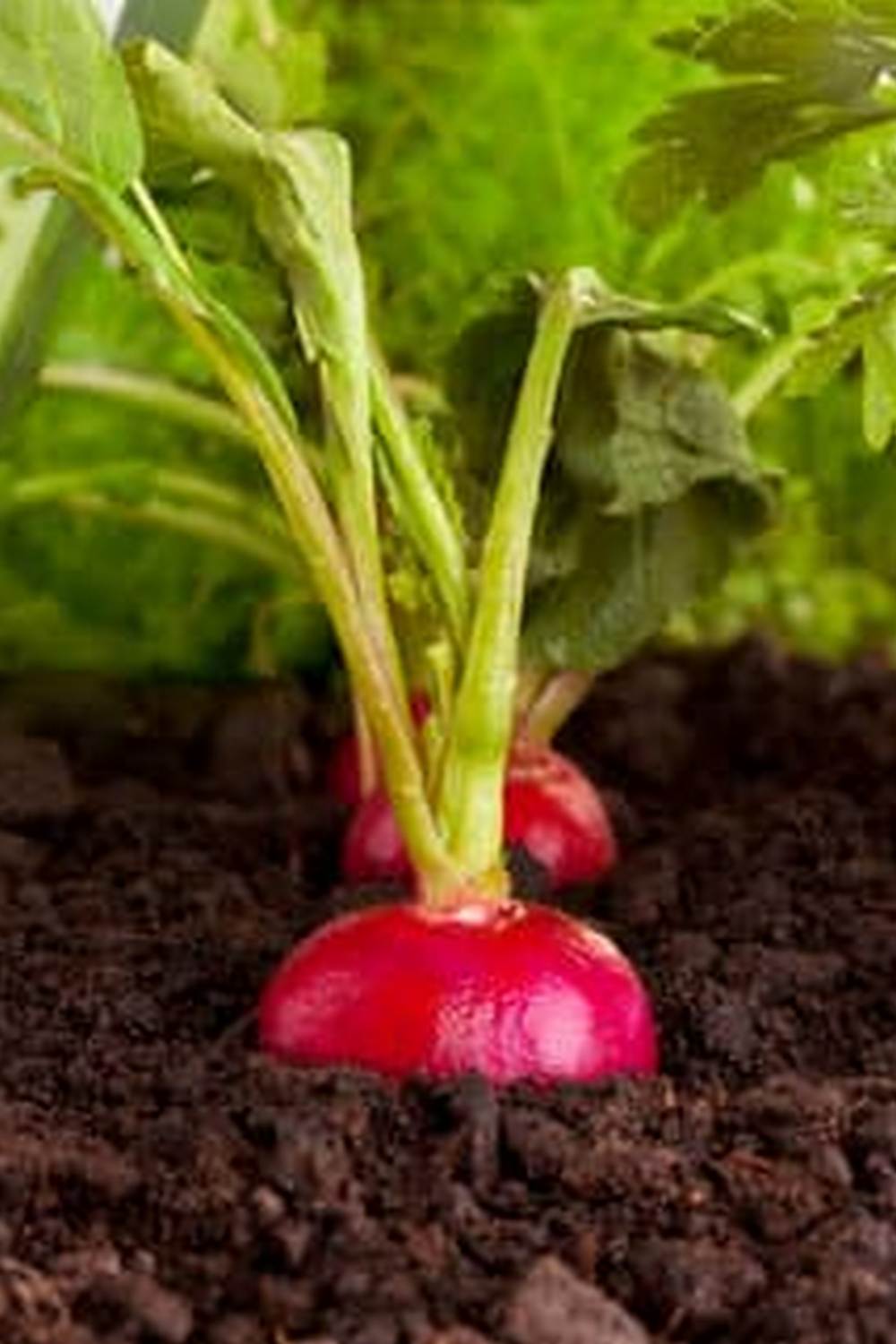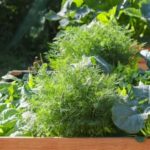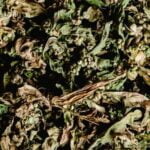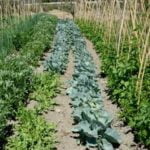Peat moss is a popular choice for improving soil quality in vegetable gardens, but the question remains: does peat moss go on top of vegetables gardens? In this article, we will explore the significance of peat moss in vegetable gardening and its benefits for plant growth.
From understanding what peat moss is and when to use it, to learning how to properly apply it and discussing its potential drawbacks, we will cover everything you need to know about using peat moss in your vegetable garden.
Peat moss, also known as sphagnum peat moss, is a natural soil amendment that is highly effective in improving the structure and texture of the soil. It is widely used for its ability to retain moisture and nutrients, making it a valuable component for healthy plant growth. Understanding the composition of peat moss and how it compares to other soil additives will provide insight into its unique properties and benefits.
Knowing when to use peat moss is crucial for achieving optimal results in your vegetable garden. Different types of vegetables may benefit from the addition of peat moss, particularly those that prefer acidic soil conditions or require improved moisture retention. Additionally, learning how to effectively apply peat moss on top of your vegetable garden will ensure that you maximize its benefits for plant growth.
Understanding Peat Moss
Peat moss is a versatile and widely used soil additive that has numerous benefits for vegetable gardens. It is composed of partially decomposed organic matter, primarily derived from sphagnum moss, and is known for its ability to increase soil moisture retention and improve nutrient absorption for plants. Unlike other soil additives such as compost or manure, peat moss has a more acidic pH level, which can be beneficial for certain types of vegetables that thrive in acidic conditions.
When it comes to comparing peat moss to other soil additives, it’s important to consider the specific needs of the vegetables being grown. While compost and manure provide valuable nutrients to the soil, peat moss excels in its ability to retain moisture, making it an ideal choice for vegetables that require consistent hydration. Additionally, peat moss’s acidic nature can be advantageous for acid-loving plants like tomatoes, peppers, and blueberries.
In terms of application, peat moss should be used judiciously in vegetable gardens. Its fine texture allows it to blend well with existing soil, and it can be applied on top of the garden bed or mixed with the top layers of the soil.
However, it’s important not to overuse peat moss, as its high acidity can negatively impact certain plant species. When used in moderation and in conjunction with other soil additives like compost or perlite, peat moss can significantly enhance the overall health and vitality of a vegetable garden.
| Vegetable | Suitable for Peat Moss? |
|---|---|
| Tomatoes | Yes |
| Peppers | Yes |
| Lettuce | No |
When to Use Peat Moss
Peat moss is a versatile and beneficial addition to vegetable gardens, but knowing when to use it is crucial for maximizing its effectiveness. The specific conditions and types of vegetables can greatly benefit from the use of peat moss, making it a valuable resource for gardeners looking to improve their yields.
Here are some specific instances when using peat moss in your vegetable garden is highly recommended:
- Acidic Soil: Peat moss can be particularly beneficial for plants that thrive in acidic soil, such as blueberries and potatoes. Its natural acidity makes it an ideal choice for balancing the pH levels of the soil and creating a favorable environment for these plants.
- Moisture Retention: Vegetables that require consistent moisture, like lettuce and spinach, can benefit from the water-retaining properties of peat moss. Adding peat moss to the soil helps to maintain proper moisture levels, reducing the risk of drought stress on these types of plants.
- Aerated Soil: Root vegetables such as carrots and radishes benefit from well-aerated soil, which allows for healthy root development. Peat moss aids in improving soil structure by promoting better air circulation and drainage, making it an excellent choice for these types of crops.
In addition to these specific conditions, certain types of vegetables are known to perform exceptionally well with the use of peat moss. These include:
- Leafy greens such as kale and Swiss chard
- Acid-loving fruits like strawberries and raspberries
- Root vegetables including beets and turnips
Understanding when to use peat moss based on these criteria can help gardeners make informed decisions about incorporating this valuable additive into their vegetable gardens. By identifying the specific conditions and types of vegetables that benefit most from peat moss, gardeners can ensure optimal growth and bountiful harvests.
How to Apply Peat Moss
When it comes to applying peat moss on top of vegetable gardens, it is important to do so correctly in order to maximize the benefits for your plants. Here are step-by-step instructions on how to properly apply peat moss:
1. Prepare the soil: Before applying peat moss, make sure the soil in your vegetable garden is well-prepared. Remove any weeds or debris, and loosen the soil to provide a good base for the peat moss.
2. Spread the peat moss: Once the soil is prepared, spread a layer of peat moss on top of the vegetable garden. It is recommended to apply a 2-3 inch layer of peat moss evenly across the surface of the soil.
3. Mix it in: After spreading the peat moss, use a rake or gardening fork to gently mix it into the top few inches of soil. This will help incorporate the peat moss with the existing soil and improve its overall texture.
4. Water thoroughly: After applying and mixing in the peat moss, water your vegetable garden thoroughly to ensure that the peat moss is properly hydrated and integrated with the soil.
5. Monitor and maintain: Throughout the growing season, monitor the moisture levels in your vegetable garden and make adjustments as needed. Peat moss can help improve moisture retention in sandy soils, but it’s important to strike a balance and avoid over-saturation.
By following these steps, you can effectively apply peat moss on top of your vegetable garden and provide an optimal environment for your plants to thrive.
It is essential to follow these steps carefully when adding peat moss on top of vegetable gardens in order to reap its numerous benefits without causing harm to your plants or environment.
Benefits of Using Peat Moss
Using peat moss in vegetable gardens offers a wide range of benefits that contribute to the overall health and productivity of the plants. One of the key advantages of using peat moss is its ability to improve moisture retention in the soil. Peat moss has a high water-holding capacity, which helps ensure that the soil remains consistently moist, reducing the risk of drought stress for vegetable plants.
In addition to improving moisture retention, peat moss also aids in nutrient absorption by vegetable plants. The fibrous structure of peat moss enables it to hold onto essential nutrients, preventing them from leaching out of the soil. This ultimately provides a more favorable environment for vegetables to thrive and access the necessary nutrients for healthy growth.
Moreover, peat moss acts as an excellent soil conditioner, enhancing the overall texture and structure of the soil. By adding peat moss to vegetable gardens, gardeners can improve aeration and drainage in the soil, creating an optimal growing environment for their crops.
This can lead to better root development and improved yield for various types of vegetables. Overall, incorporating peat moss into vegetable gardens can significantly enhance the overall health and productivity of the plants, making it a valuable addition to any garden bed.
Potential Drawbacks of Peat Moss
Peat moss is a popular choice for vegetable gardens due to its ability to improve moisture retention and nutrient absorption. However, it is important to consider the potential drawbacks of using peat moss in your garden. One of the main drawbacks is its acidity.
Peat moss has a naturally low pH, which can be detrimental to certain plants, especially those that prefer neutral or alkaline soil. It’s important to test the pH of your soil and consider adding lime or other amendments to balance the acidity if you plan to use peat moss.
Another potential drawback of peat moss is its environmental impact. Harvesting peat moss involves stripping away layers of living material from wetlands, which can have negative effects on these sensitive ecosystems. Additionally, the extraction process releases carbon dioxide into the atmosphere, contributing to greenhouse gas emissions. As a result, many environmentally conscious gardeners are looking for alternative soil additives that are more sustainable and eco-friendly.
Despite these drawbacks, there are ways to mitigate the negative impact of using peat moss in vegetable gardens. For example, you can mix peat moss with other soil additives such as compost or coconut coir to help balance its acidity and reduce the amount needed overall. Additionally, seeking out sustainably sourced peat moss or exploring alternative soil amendments can help minimize the environmental impact while still reaping the benefits of improved moisture retention and nutrient absorption.
| Potential Drawbacks of Peat Moss | Benefits of Mitigating Negative Impact |
|---|---|
| Acidity | Mixing with other soil additives |
| Environmental Impact | Sustainably sourced options; exploring alternative amendments |
Tips for Using Peat Moss
When it comes to using peat moss in vegetable gardens, there are a few additional tips and tricks that can help maximize its benefits. One effective way to use peat moss is by mixing it with other soil additives, such as compost or vermiculite.
This can improve the overall nutrient content and structure of the soil, providing a better environment for vegetable plant growth. By combining peat moss with other organic materials, you can create a well-balanced growing medium that supports healthy and robust vegetables.
Another tip for using peat moss in vegetable gardens is to properly prepare the soil before applying it. This involves loosening the top layer of soil, removing any debris or weeds, and working the peat moss into the top few inches of the soil. This will ensure that the peat moss is effectively integrated into the growing environment and can provide its moisture retention and nutrient absorption benefits more efficiently.
Additionally, consider testing the acidity level of your soil before adding peat moss. While peat moss is known for its acidic nature, some vegetables may thrive in more neutral or alkaline environments. By understanding your soil’s pH levels, you can make an informed decision about whether peat moss is suitable for your specific vegetable garden needs.
Finally, when using peat moss in vegetable gardens, be mindful of its environmental impact. Peat bogs are non-renewable resources that take centuries to develop, so consider using alternatives such as coconut coir or composted bark if sustainability is a concern for you. By following these tips and considering alternative options if needed, you can effectively use peat moss to enhance your vegetable garden while minimizing any potential drawbacks.
Conclusion
In conclusion, peat moss can be a valuable addition to vegetable gardens, providing numerous benefits for plant growth and health. As discussed in this article, peat moss is an organic soil additive that improves moisture retention and nutrient absorption, making it particularly beneficial for certain types of vegetables and in specific conditions. Proper application of peat moss involves layering it on top of the vegetable garden soil, followed by thorough mixing to ensure even distribution.
It is important to note that while peat moss offers various advantages, there are also potential drawbacks to consider. Its high acidity may not be suitable for all plants, and there are environmental concerns regarding the sustainability of peat bogs where it is sourced from. Therefore, it is essential to weigh the pros and cons before incorporating peat moss into your vegetable garden.
Overall, when used thoughtfully and in conjunction with other soil additives, peat moss can contribute to healthy and thriving vegetable gardens. By understanding its composition, knowing when to use it, properly applying it, and considering potential alternatives or ways to mitigate its drawbacks, gardeners can maximize the benefits of using peat moss.
Ultimately, the decision whether or not to use peat moss on top of vegetable gardens should be based on the specific needs of the plants being grown and the overall environmental impact.
Frequently Asked Questions
Should You Put Peat Moss in a Vegetable Garden?
Putting peat moss in a vegetable garden can be beneficial in certain situations. It helps improve soil structure, retain moisture, and increase nutrient retention. However, it’s important to be mindful of its environmental impact and consider alternative options.
Do You Put Peat Moss on Top of Soil?
While some gardeners do use peat moss on top of soil to help with moisture retention and weed control, others prefer to mix it into the soil. It can be beneficial as a top dressing for pots or containers but may not provide the same benefits when used on top of garden soil.
How Do You Use Peat Moss in a Raised Garden?
Using peat moss in a raised garden is similar to using it in a traditional garden bed. It can improve the soil’s ability to hold water and nutrients while also promoting healthy root growth for your plants. Mixing it into the existing soil is often recommended to reap these benefits.

If you’re looking to get into vegetable gardening, or are just looking for some tips on how to make your current garden better, then you’ve come to the right place! My name is Ethel and I have been gardening for years. In this blog, I’m going to share with you some of my best tips on how to create a successful vegetable garden.





